Prace terenowe
Sampling stations 2013
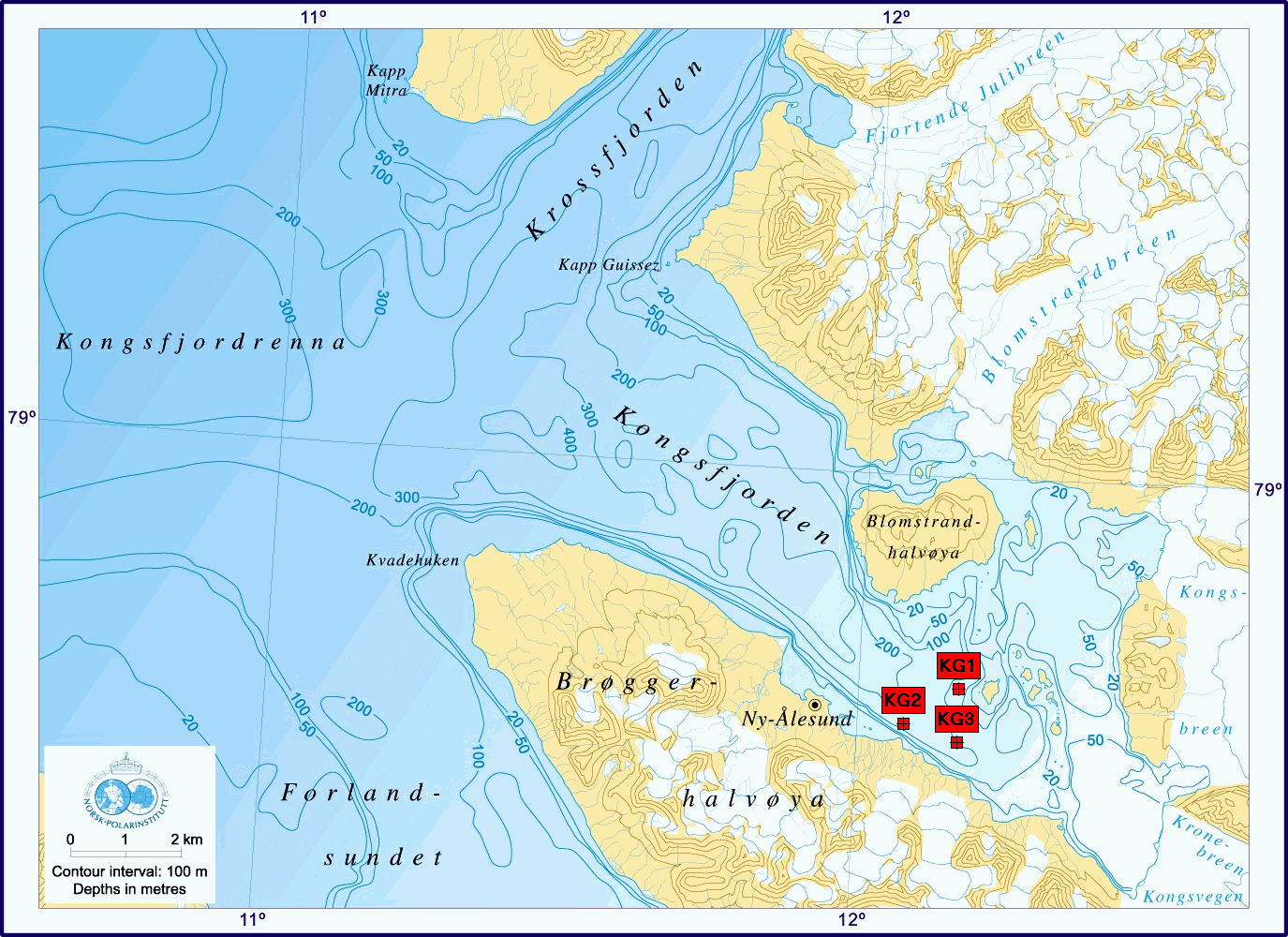
Kongsfjord |
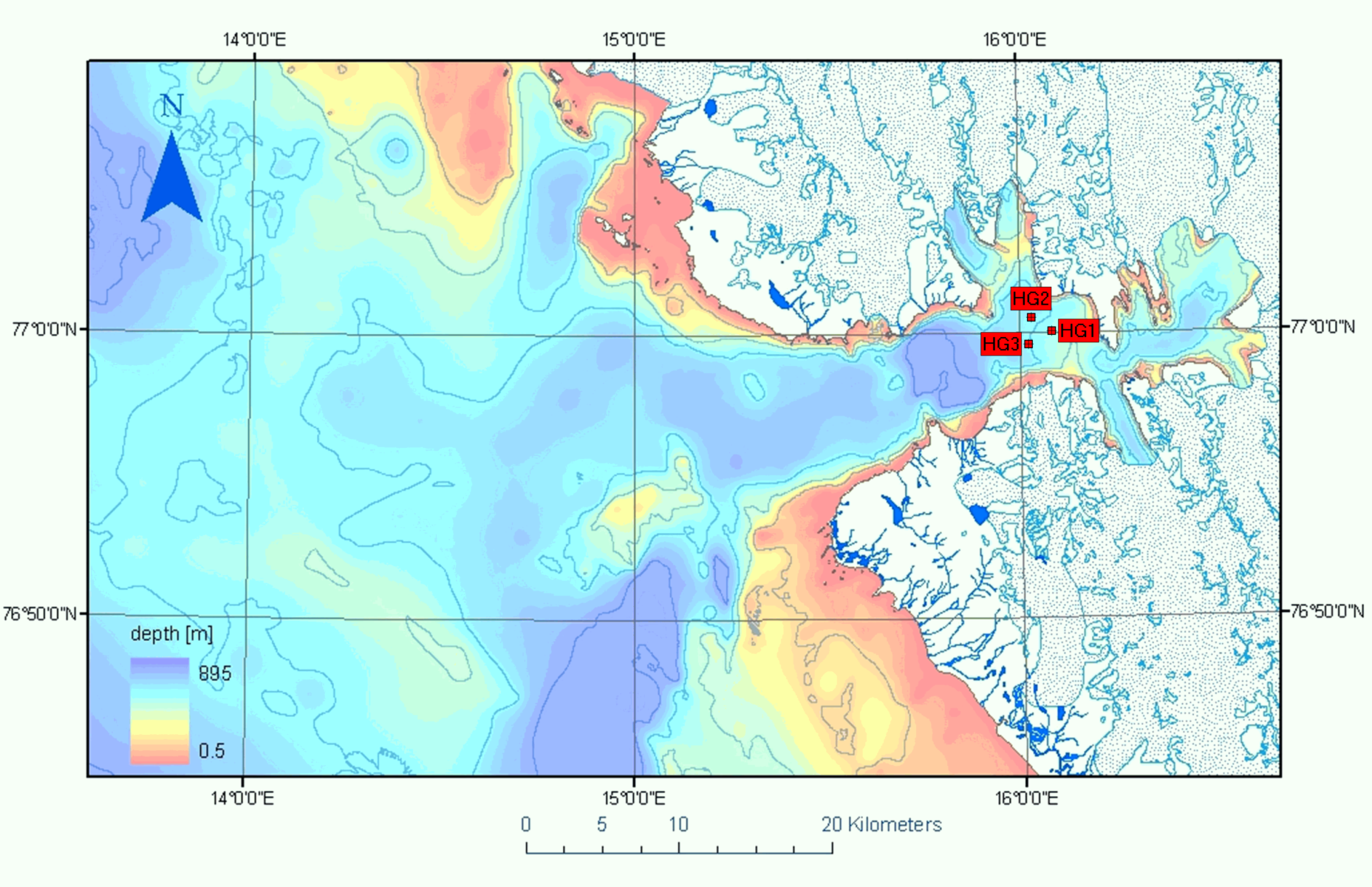
Hornsund |
CTD profiles from sampling stations described in table

CTD_Hornsund |

CTD_Station_HG1_H2Ben |

CTD_Station_HG2 |
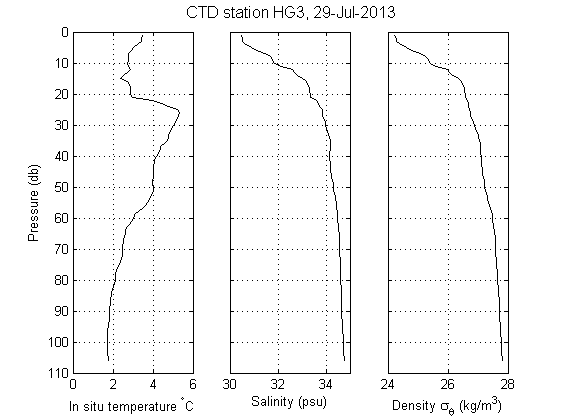
CTD_Station_HG3 |
.png)
CTD_Station_HG1_H4(H2B) |
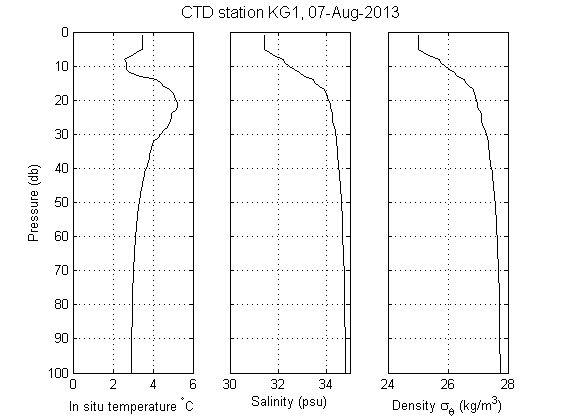
CTD_Station_KG1 |

CTD_Station_KG2 |

CTD_Station_KG3 |
| station | year | date | area | depth | longitude | latitude |
| HG1 | 2013 | 30.07.2013 | Hornsund | 84 | 16°04,710 | 77°00,052 |
| HG2 | 2013 | 30.07.2013 | Hornsund | 107 | 16°01,495 | 77°00,539 |
| HG3 | 2013 | 30.07.2013 | Hornsund | 105 | 16°01,108 | 76°59,599 |
| KG1 | 2013 | 07.08.2013 | Kongsfjorden | 90 | 12°08,714 | 78°55,881 |
| KG2 | 2013 | 08.08.2013 | Kongsfjorden | 115 | 12°04,252 | 78°55,236 |
| KG3 | 2013 | 08.08.2013 | Kongsfjorden | 98 | 12°09,641 | 78°54,904 |
HG1 |
HG2 |
HG3 |
KG1 |
KG2 |
KG3 |
Letnia kampania terenowa 2013
| 25th July – arrival by air to Longyearbyen, embarkment on OCEANIA | 26th July – arrival to Hornsund, CTD measurments – fjords profiling | 27th July – zooplankton monitoring profiles |
 Fot.1 Roman Obuchowski, crewman for research equipment, takes water samples |
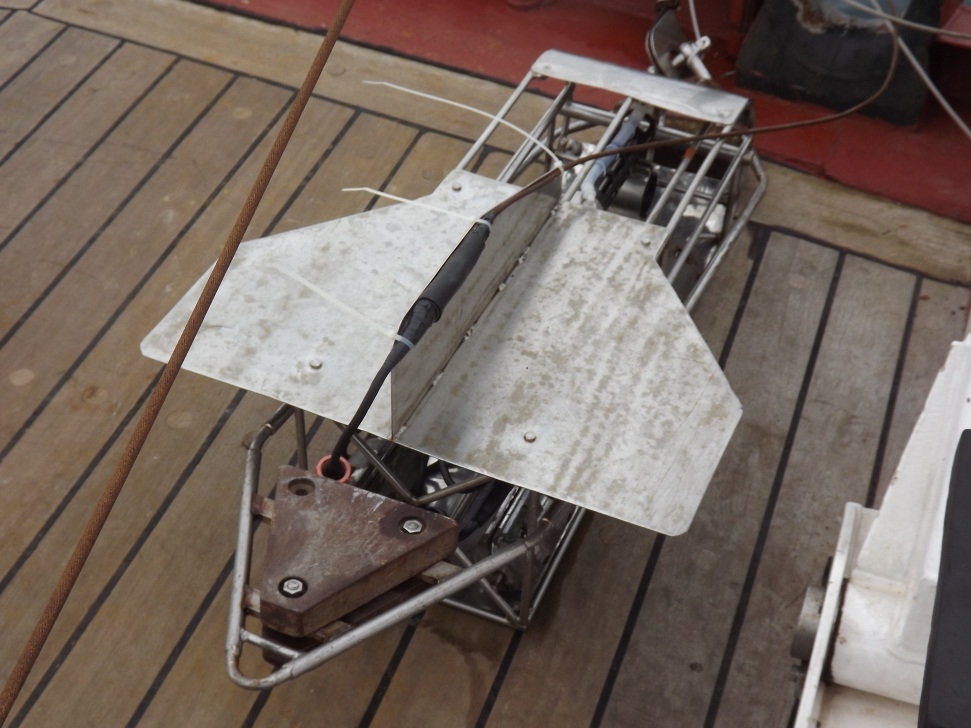 Fot.2 CTD used for continuous undulated profiling along the fjord axis |
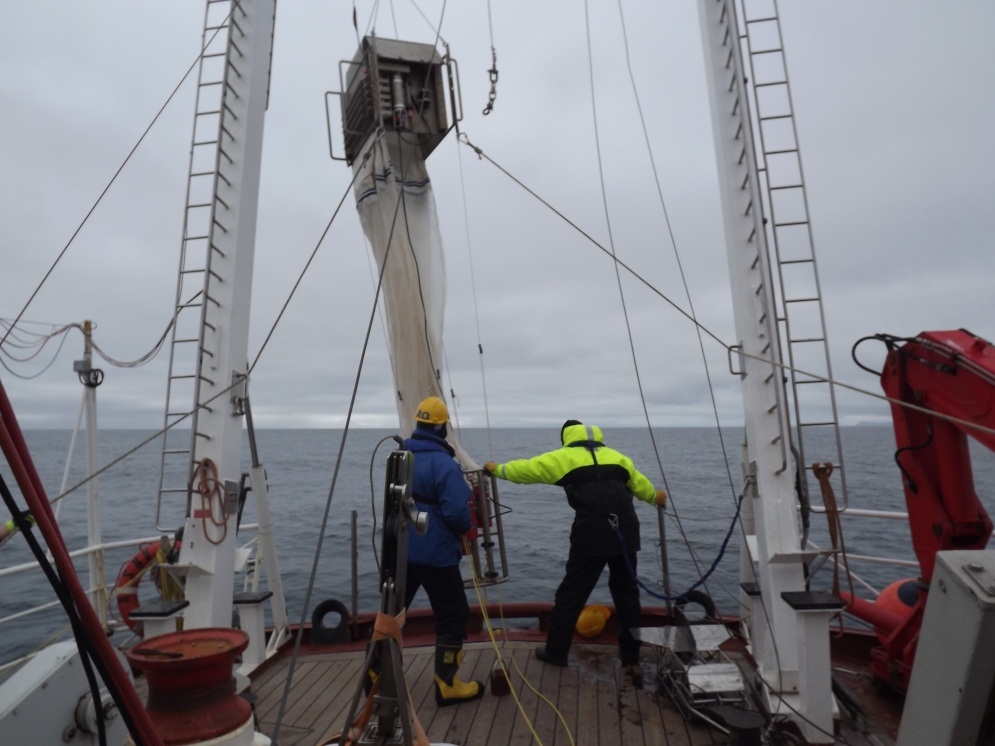 Fot. 3 deployment of Multinet for mesozooplankton sampling |
| 28th July – benthos monitoring profiles, collection of sediment cores and fauna for respiration measurements | 29th July – nested sampling for GAME – water column, sediment trap deployment | 30th July - dredging for epibenthos |
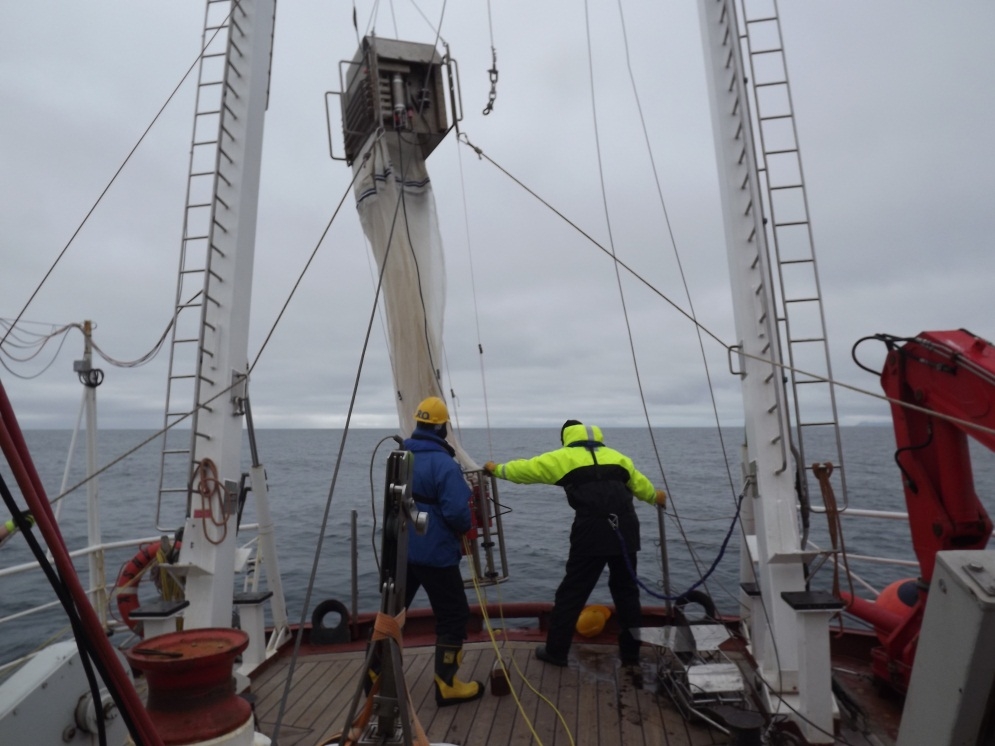 Fot. 4 Field camp for respiration measurements in Isbjornhamna |
 Fot. 5 Ania Kubiszyn – takes water samples for microplankton analyses |
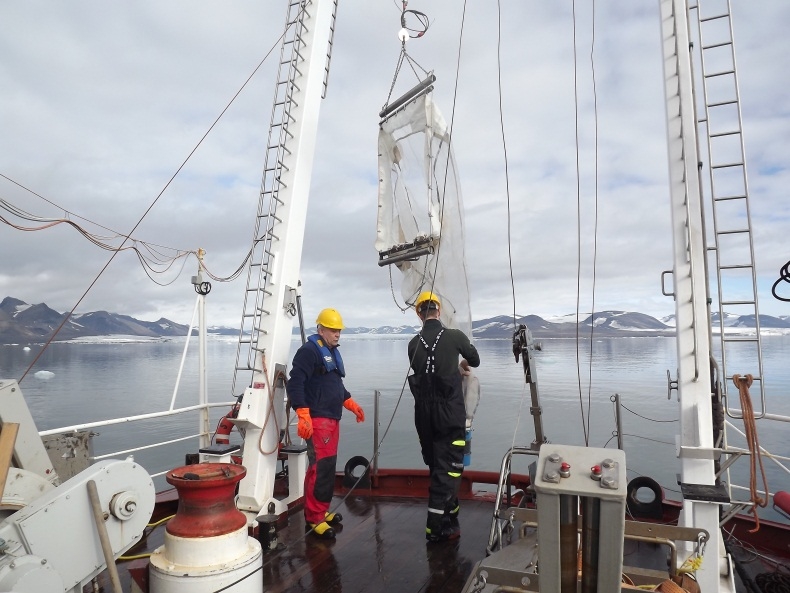 Fot. 6 Roman Obuchowski and Kuba Kowalczyk deploys Tucker Trawl – macroplankton net |
| 31st July – zooplankton - seabirds feeding ground survey off shore | 01st August - seabirds feeding ground survey off shore | 02nd August – sediment trap collection, outer monitoring stations |
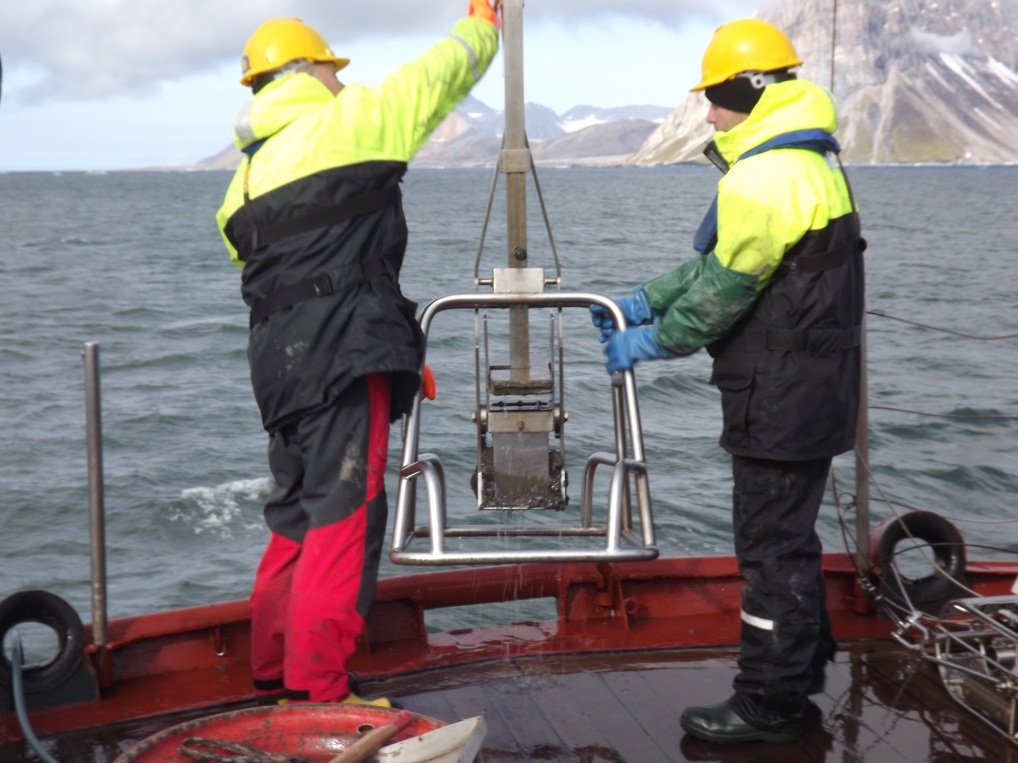 Fot. 7 Roman Obuchowski and Mikołaj Mazurkiewicz deploys sediment box corer |
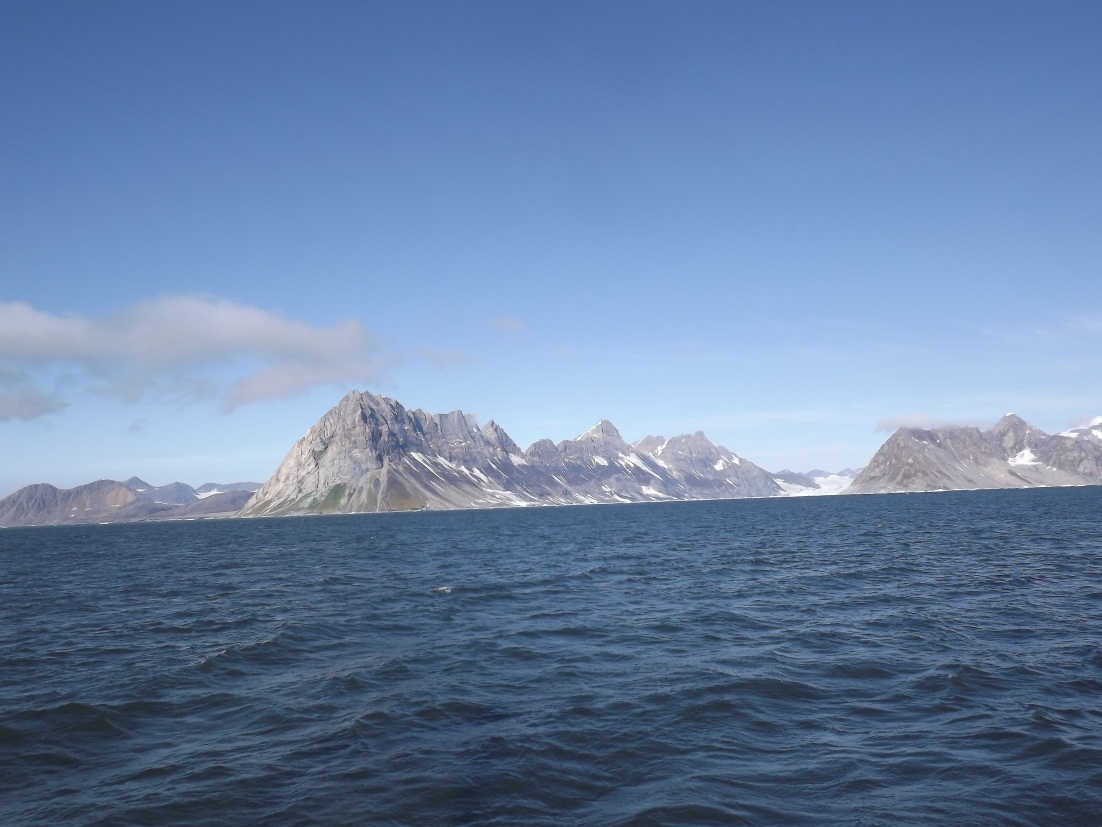 Fot. 8 View on the Gnalberget and Sofiekamen, Hornsund |
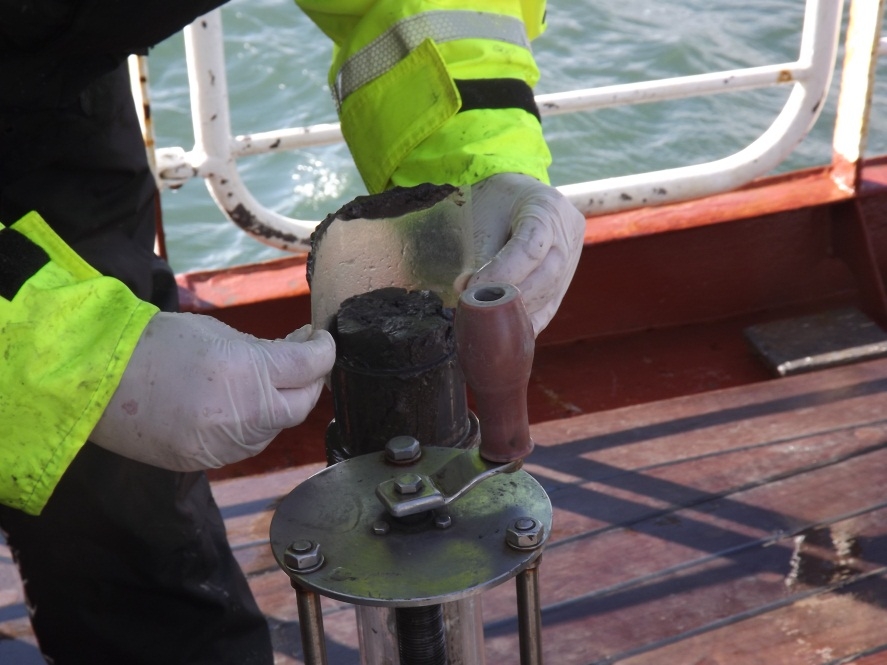 Fot. 9 Gentle cutting of sediment core for biochemical analyses |
| 03rd August - departure to Longyearbyen | ||
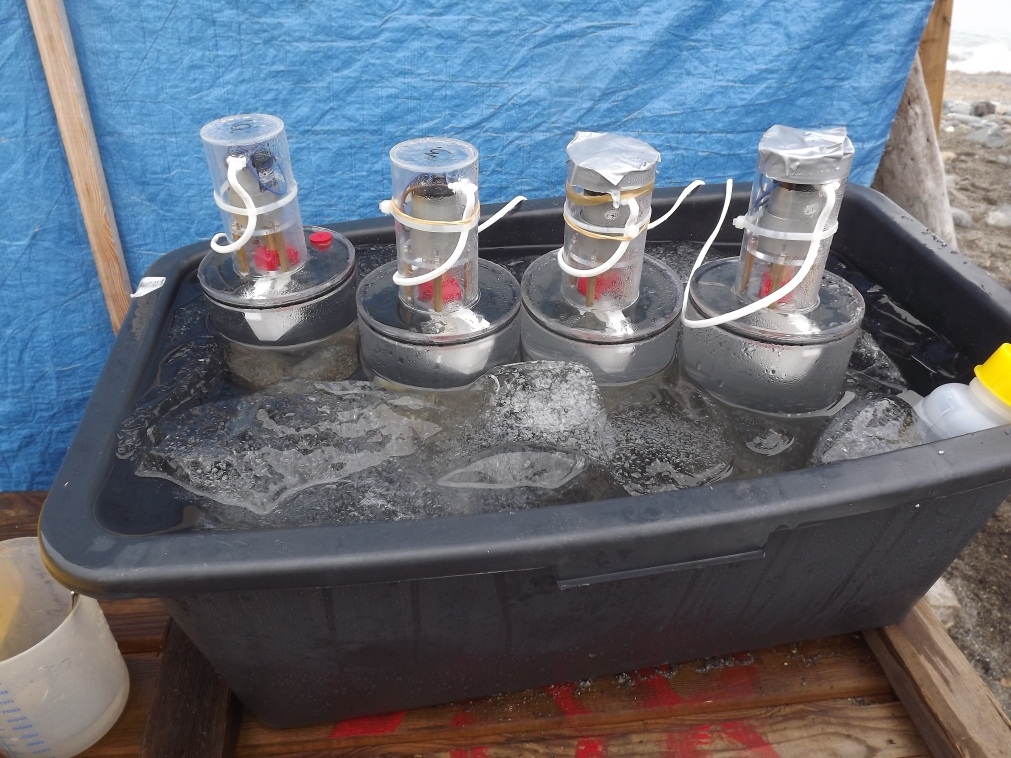 Fot. 10. Respiration chambers cooled with sea ice in the field lab |
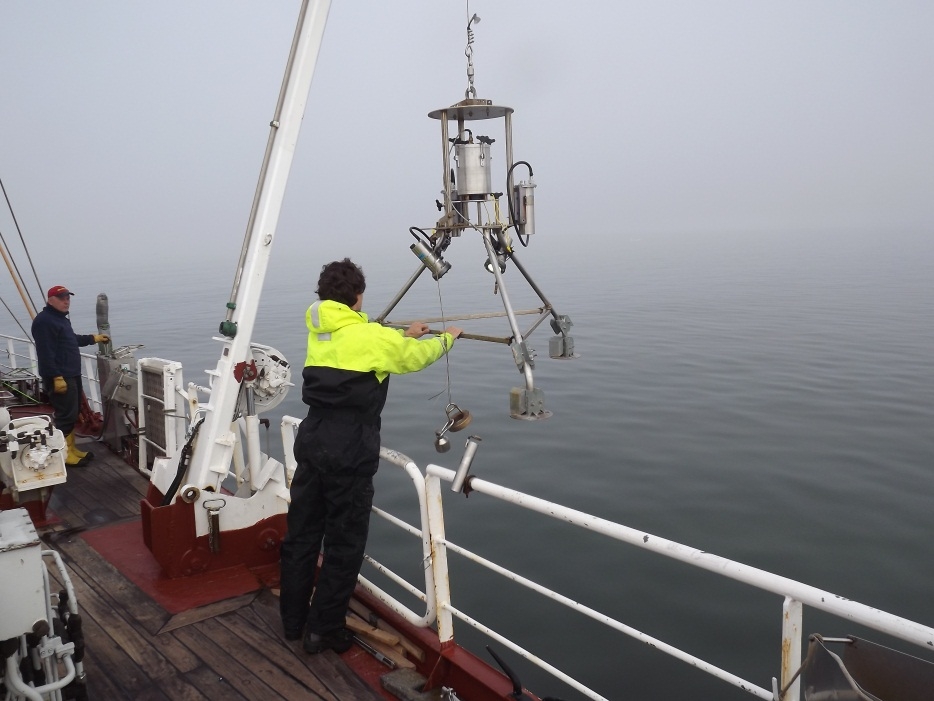 Fot. 11 Kajetan Deja, deploys lander with still camera for seabed images |
 Fot. 12 Flag of the associated project Face2Face, that marks position of the sediment trap |
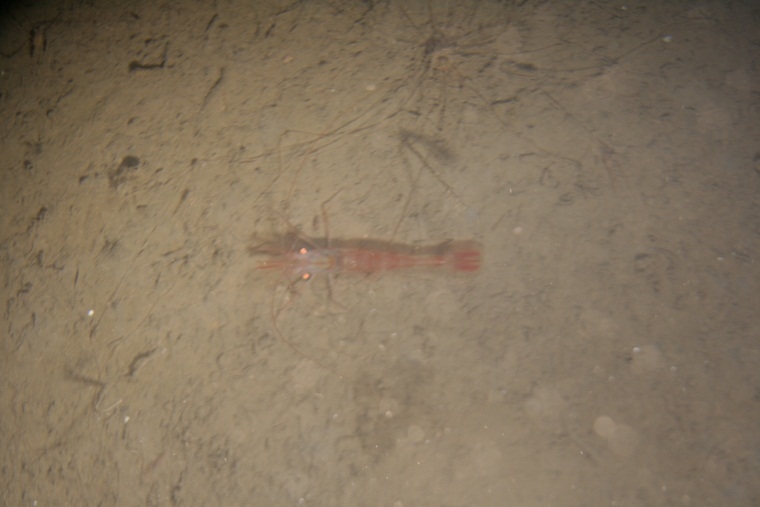 Fot. 13 Seabed image from Kongsfjorden, 310 m deep, with Pandalus borealis and marks of worms activity in the view |
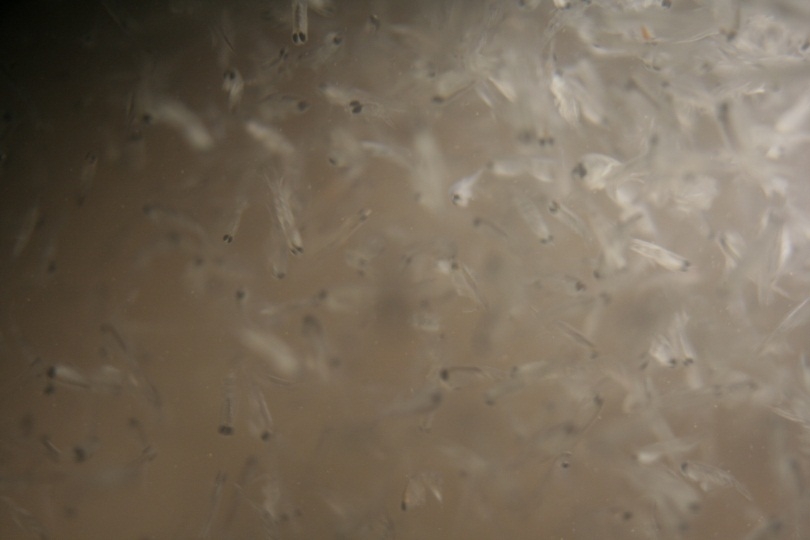 Fot. 14 Swarm of marine macroplankton (Thysanoessa, Themisto) 10cm above the seabed close to the glacier front in Kongsfjorden, 80 m depth – marine plankton escapes surface freshened layer and dive to the dense, cold saline near bottom waters creating hot spot for predators |
|
| 04th August – crew exchange in Longyearbyen – departure to Kongsfjorden | 05th August – zooplankton monitoring | 06th August – collection of sediment cores and fauna for respiration expriments, CTD profiling |
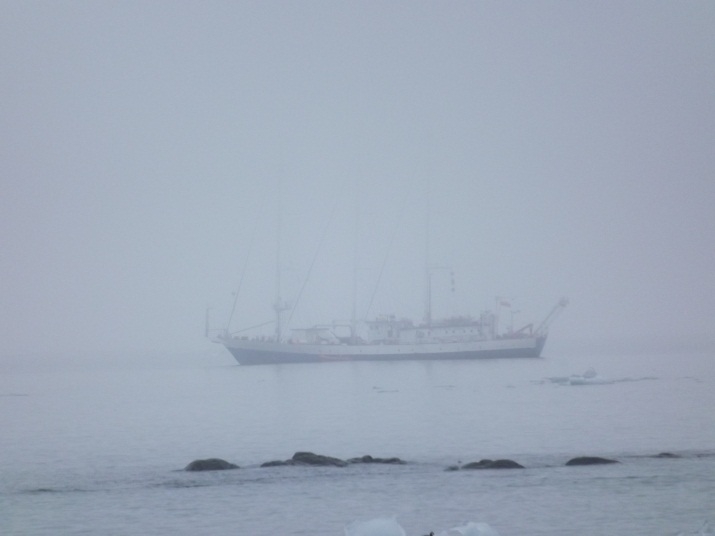 Fot. 15 r/v “OCEANIA” in the fog – usual view during our field work |
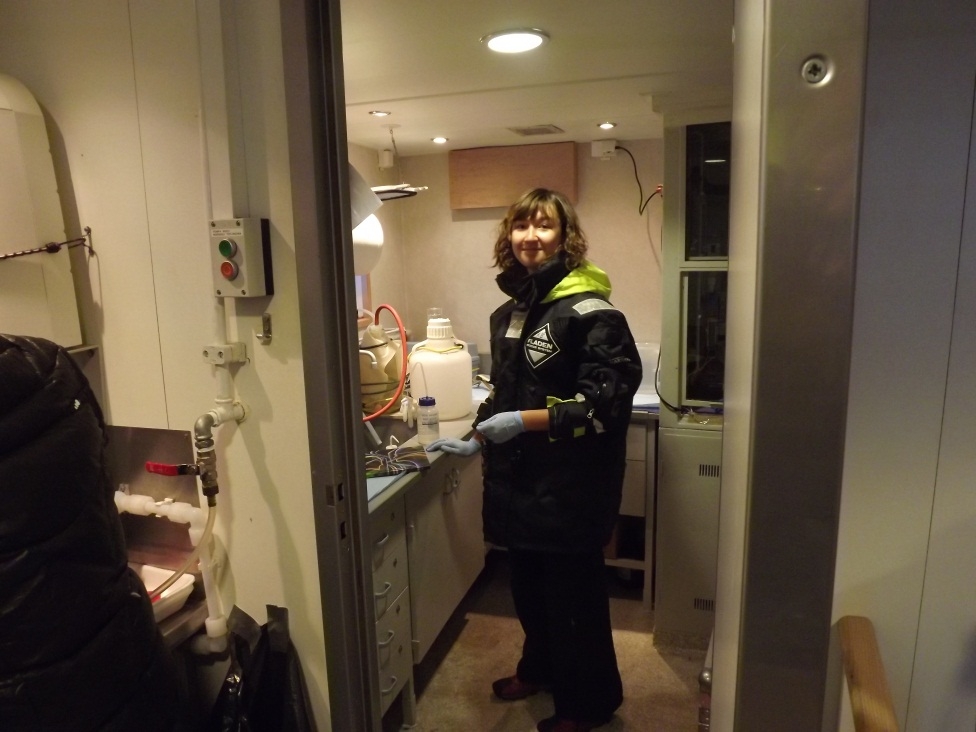 Fot. 16. Marta Konik took care for the optical measurements and surface suspensions sampling |
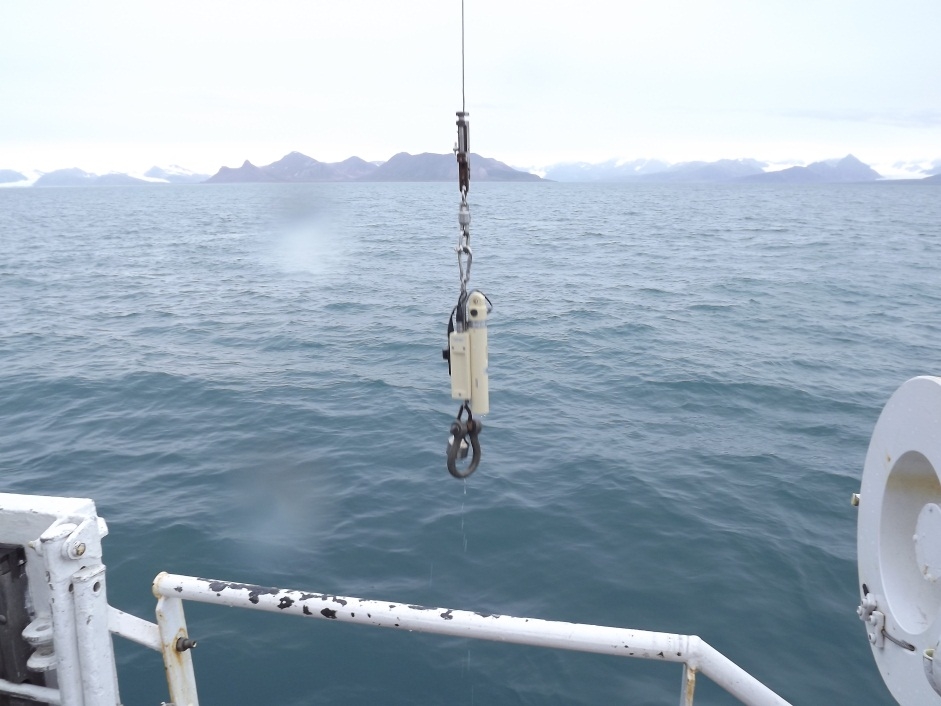 Fot. 17. Combined CTD and transparency sensor ready for vertical profiling |
| 07th August – benthos monitoring stations, dredgings for epifauna | 08th August – nested sampling for GAME - water column, sediment trap deployment | 09th August – nested sampling for GAME – sediment and benthos |
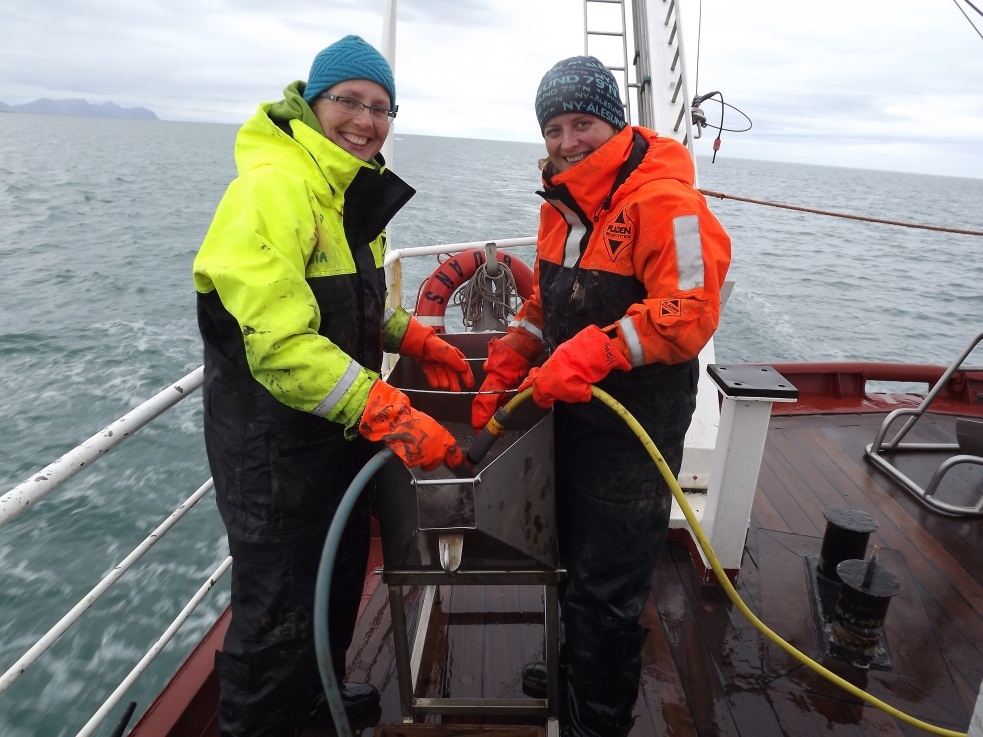 Fot. 18. Zosia Legeżyńska and Maria Włodarska- Kowalczuk washing sediment sample for benthos survey |
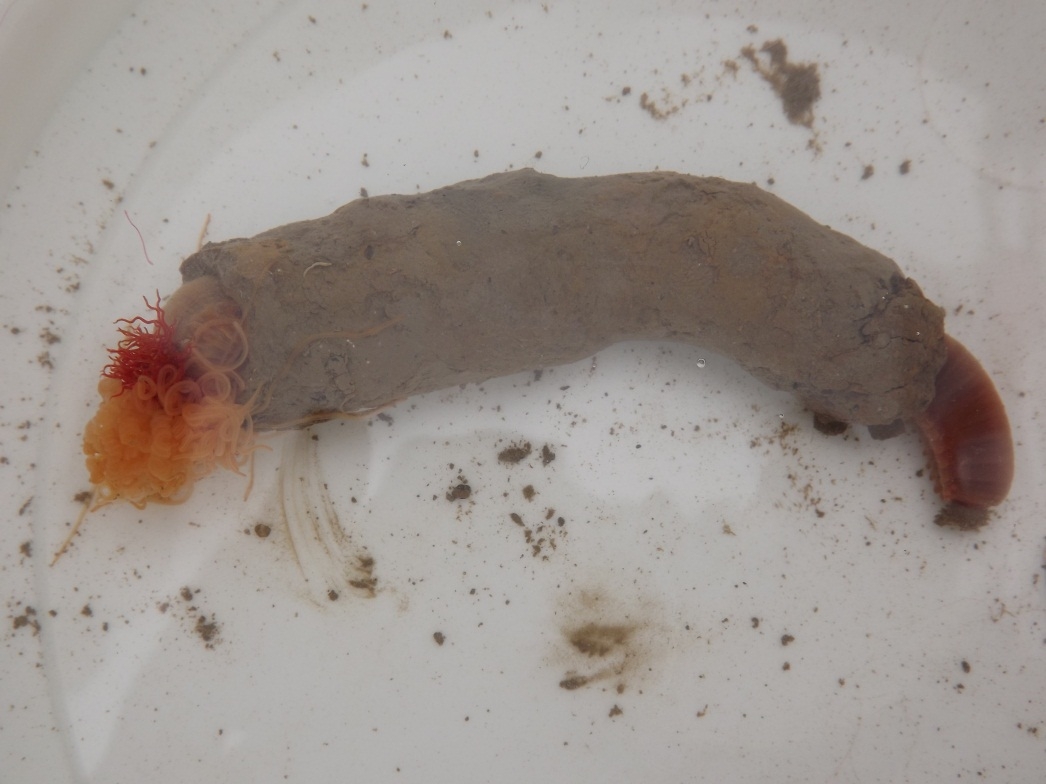 Fot. 19 Large (10cm) polychaete worm Terebellides stroemi, from the 100m depth |
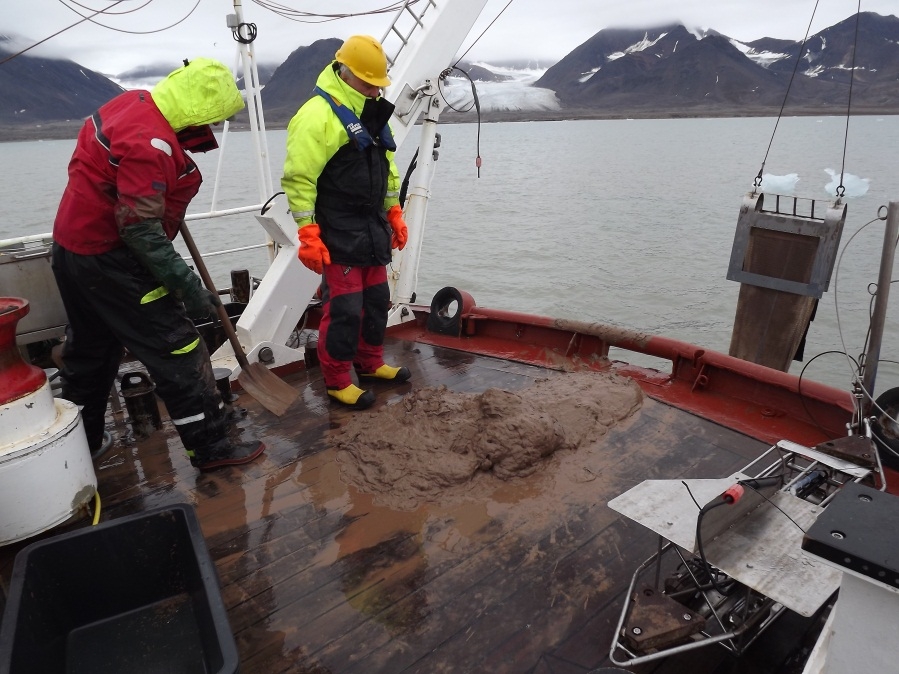 Fot. 20 Epibenthic sledge (nick name Pancerwagen Guderian) and mould of soft sediment from Kongsfjorden |
| 10th August – benthos monitoring stations, dredgings for epifauna | ||
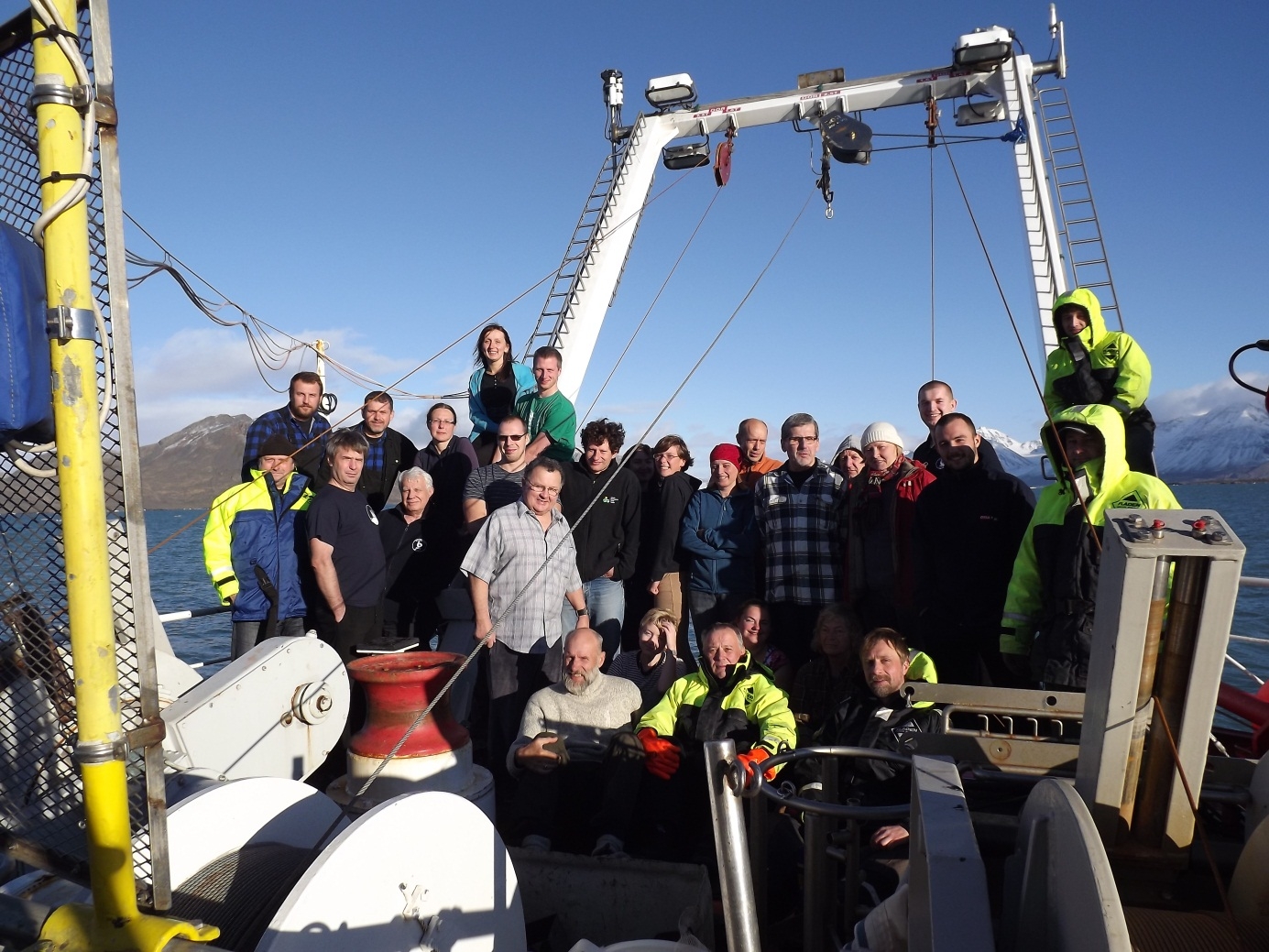 Fot. 21 Crew and researchers in the last day of the project field work |
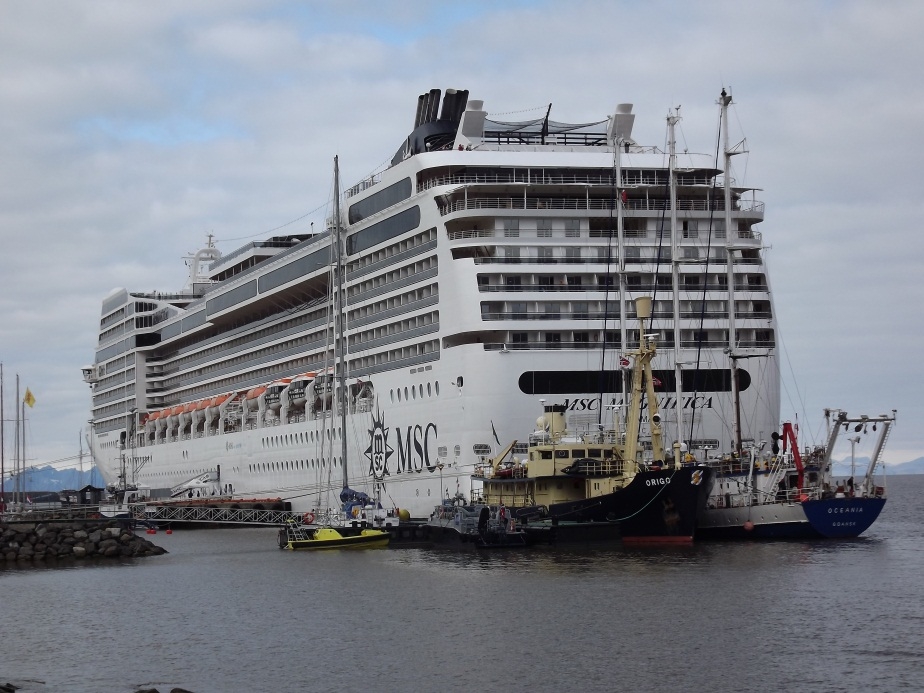 Fot. 22. r/v “Oceania” next to the large cruiser in Longyearbyen harbour |
|
| 11th August – departure to Longyearbyen airport, return home. |
Wiosna 2013 Kongsforden i Hornsund
Wiosna 2013 Ny Alesund
16.04.2013 Ny Alesund
Sea ice is not common in the area on open sea. Sea ice situation (http://lance-modis.eosdis.nasa.gov/wms/arctic.html) |
First measurements 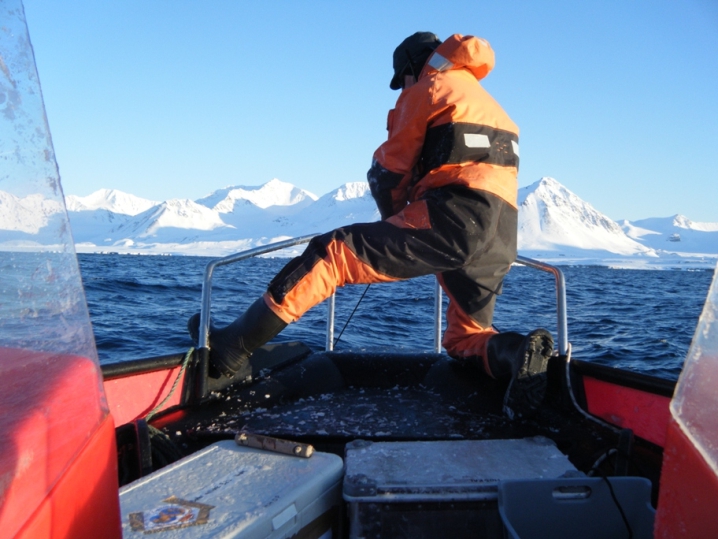
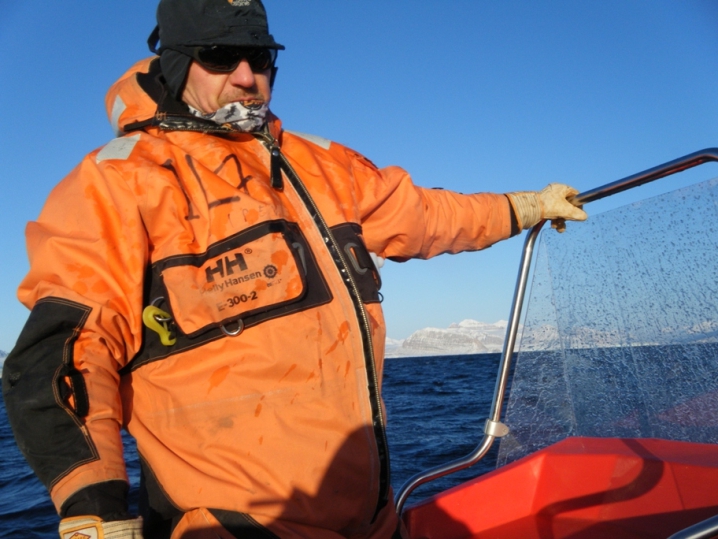 in the fiord showed not so reach life in pelagial. No bloom, not so many zooplakton. Seems that bloom starts outside Isfjorden |
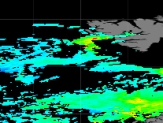 Chlorofil a concentration 13-15_04_2013 (http://oceancolor.gsfc.nasa.gov/cgi/l3?per=3D&prd=CHL_chlor_a&sen=A&res=9km&num=24&ctg=Standard&date=13Apr2013) |
Spring field sampling activity in Polish GAME Project – April/May 2013
Aim of the sampling activity: to collect samples of zooplankton and protoplankton (autotrophic and heterotrophic plankton) communities, to collect water samples for chlorophyll concentration, and to do measurements of water temperature and salinity and light attenuation in spring and in the two fjords being compared in the GAME Project.
Coordinates of the preferable sampling stations.
Hornsund: Station name H2 (long term monitoring station) 76.9841°N, 015.7651°N, depth ~200 m. If not accessible then a substitute station in the middle of the fjord, towards the entrance, Name H2+, approximately at 76.96°N, 015.53°E, depth ~200 m, or another suitable place in the central part of the fjord.
Kongsfjorden: Station name K3 (long term monitoring station) 78.9555°N, 011.9320°N, depth ~300 m. If not accessible then a substitute station in the middle of the fjord, towards the entrance, Name K2, 78.9780°N, 011.7059°E, depth ~300 m, or another suitable place in the central part of the fjord.
Sampling/measurements at the station.
CTD profile throughout the water column (surface/bottom).
Light attenuation measurement with Secchi disk.
Zooplankton sampling. Aboard small boat – with WP2 net (mesh size 0.180 mm), preferably in strata: bottom-50, 50-10, 10-0 m; Aboard Helmer Hanssen, with Multi Plankton Sampler (MPS, mesh size 0.180 mm (0.200 mm); in Hornsund: bottom-150 m, 150-100 m, 100-50 m, 50- 10 m, 10-0 m; in Kongsfjorden: bottom-200 m, 200-100 m, 100-50 m, 50- 10 m, 10-0 m. Zooplankton sample fixed with formaldehyde, 4% final concentration in sea water. Provide sample with sample label on copying paper (including at least sample number, station name, sampling depth, date of sampling) and if possible label the sample bottle with key information about the sampling.
Phytoplankton sampling (regardless from boat or ship). Net phytoplankton sampling – with “Phytoplankton net” (mesh size 0.02 mm), vertically integrated tow from 30-0 m. Phytoplankton net sample fixed with Lugol’s solution (~ 0.5 - 1 % final concentration, in practice, 0.5 – 1.0 ml Lugol’s solution in 100 ml of sample volume), after 24 hour add formaldehyde (~2% final concentration, in practice, 5 ml of 36% formaldehyde in 100 of sample volume). Provide sample with sample label and label the sample bottle (see zooplankton sampling).
Water sampling for quantitative phytoplankton samples and chlorophyll concentration measurements – with water bottle from fixed depths (0, 3, 7, 15, 25, 30 m), quantity of 1000 ml of sea water poured into transport bottle and stored in cooled and dark place until brought to lab asap.
Quantitative phytoplankton sampling – in the lab shake well the water sample in the transport bottle, collect quantity of 250 ml of sea water taken with water bottle at a station from fixed depth, quantity placed in sample bottle (dark?), fixed the same way as phytoplankton net sample (with Lugol’s solution and formaldehyde). Provide sample with sample label and label the sample bottle (see zooplankton sampling).
Sampling for chlorophyll concentration – in the lab shake well the water sample in the transport bottle, filter known amount of water (from 50 to 250 ml) through Whatman GF/F filter until the filter turns greenish (note the water volume filtered). After completing filtration of a sample, fold the filter, blot it and wrap in aluminum foil. Put the filter in zip bag, provide with sample label on copying paper and store in bio-freezer or in a regular freezer (min -20°C).
Carry on notes from field and lab activity with information on sampling, measurements, sampling conditions (ice, weather), deviations from procedures etc. Take PICTURES and collect facts for expedition blog!!!.
*****


